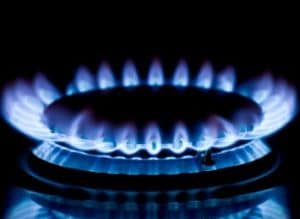High Natural Gas Bills? Check Out Your Appliance Costs
 If your natural gas bill is high, there are several things you can do to help control your energy costs, including simply using less natural gas. One of the ways you can use less natural gas is to replace old and inefficient appliances with new, more efficient appliances. This guide will show you how much energy common natural gas appliances consume over the course of a year and how much, on average, it costs to operate them.
If your natural gas bill is high, there are several things you can do to help control your energy costs, including simply using less natural gas. One of the ways you can use less natural gas is to replace old and inefficient appliances with new, more efficient appliances. This guide will show you how much energy common natural gas appliances consume over the course of a year and how much, on average, it costs to operate them.
Appliance Natural Gas Usage
You can use this information to make informed decisions about upgrading the natural gas appliances in your home that have the greatest effect on your natural gas bill.
| Appliance | Typical Consumption Per Year (therms)* |
Cost Per Month** |
Cost Per Year** |
|---|---|---|---|
| Furnace | 489 th | $43 | $518 |
| Pool heater | 360 th | $32 | $381 |
| Outdoor yard light | 302 th | $27 | $320 |
| Water heater | 258 th | $23 | $273 |
| Gas fireplace with gas logs | 72 th | $6.33 | $76 |
| Clothes dryer | 69 th | $6.08 | $73 |
| Free standing range | 40 th | $3.50 | $42 |
| Outdoor grill | 15 th | $1.32 | $16 |
A Few Notes on Appliance Costs
The average gas costs associated with many appliances – including your furnace, pool heater, outdoor yard light, gas fireplace, and outdoor grill – are skewed somewhat heavily toward the cold winter months, resulting in high usage for a certain period of time followed by little usage the rest of the year. Therefore, while we’ve provided average monthly costs for using these appliances, these numbers will almost certainly be much higher during the winter and much lower during the summer, depending on your climate. The important figure to note regarding these appliances is average cost per year.
Furnace, Pool Heater and Gas Fireplace
Furnace numbers are based on an average gas furnace with a 92 percent efficiency rating. Pool heater numbers are based on using 300,000 Btu/hr over 120 hours of annual operation. Gas fireplace numbers are based on burning gas logs (as opposed to using a gas-starter fireplace) at 60,000 Btu/hr over 120 hours of annual operation.
Reduce Furnace and Pool Heater Usage
To increase the energy efficiency of your furnace without investing in a new furnace, try changing out the furnace filters on a regular basis. You can reduce usage when operating your furnace setting back your programmable thermostat least 10 degrees for eight hours a day.
To reduce pool heating costs, consider using a pool cover to prevent heat from escaping or turning down the pool temperature a degree or two (each degree of setback will save 10 to 30 percent off pool heating costs).
Outdoor Yard Light
Outdoor yard light numbers are based on using a triple mantle gas light that burns 3.451 Btu/hr and operates 24 hours a day, 365 days a year.
Reduce Yard Lamp Usage
Some gas lamps run all the time. If you run yours only when it is dark enough for the flame to be useful, you will cut your expenses by more than half. You can achieve even more savings by not running the lamp all night long, or by only running it some nights.
Water Heater
Water heater numbers are based on 40-gallon models with a 0.63 EF rating using 40,000 Btu/hr and based on the U.S. Department of Energy’s (DOE) national average of 64 gallons of hot water use daily.
Reduce Water Heater Usage
To reduce water heating costs, the DOE suggests shortening your showers and washing your clothes in cold water. Besides simply using less hot water, you can also set your water heater as low as 120 degrees. Every 10-degree reduction in water heater temperature can save three to five percent in monthly energy costs, according to the U.S. Department of Energy. Other energy-saving options include insulating your water heater tank and hot water pipes and installing heat traps on your water heater tank.
Clothes Dryer
Clothes dryer numbers are based on a 5.8 cu. ft. model using 20,000 Btu/hr over 275 hours of annual operation.
Reduce Clothes Dryer Usage
The most direct way to reduce costs when it comes to drying clothes is to hang your clothes to air dry, which will also increase the lifespan of your clothes. Other energy-saving options include using moisture sensors instead of timers, cleaning the lint filter after every load and drying towels, and heavy cotton in a separate load from lighter-weight clothes.
Saving Money with Spark Energy
If changing your appliance usage isn’t enough, consider changing your natural gas supplier. Spark Energy has been providing natural gas to states with deregulated energy since 1999. For more information about programs in your area, click here!



